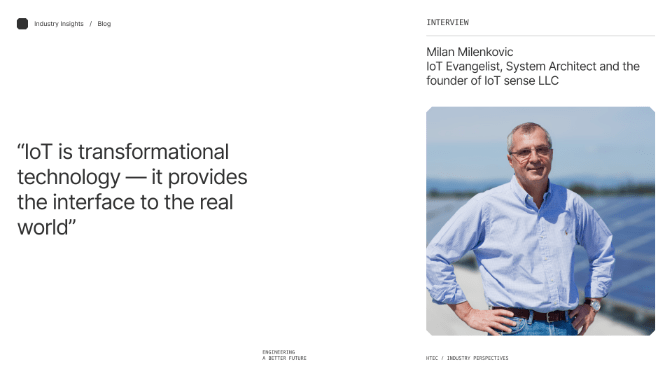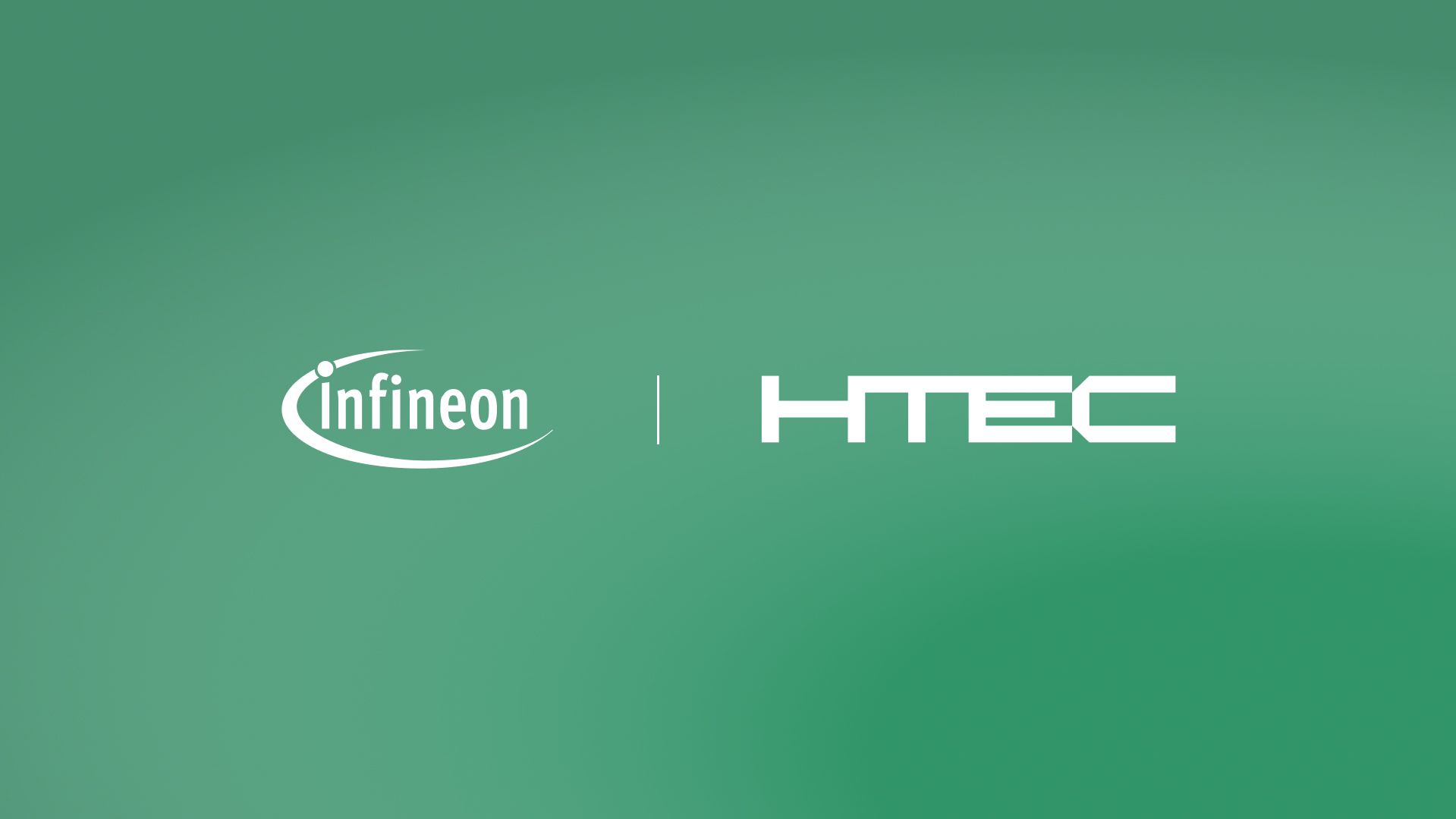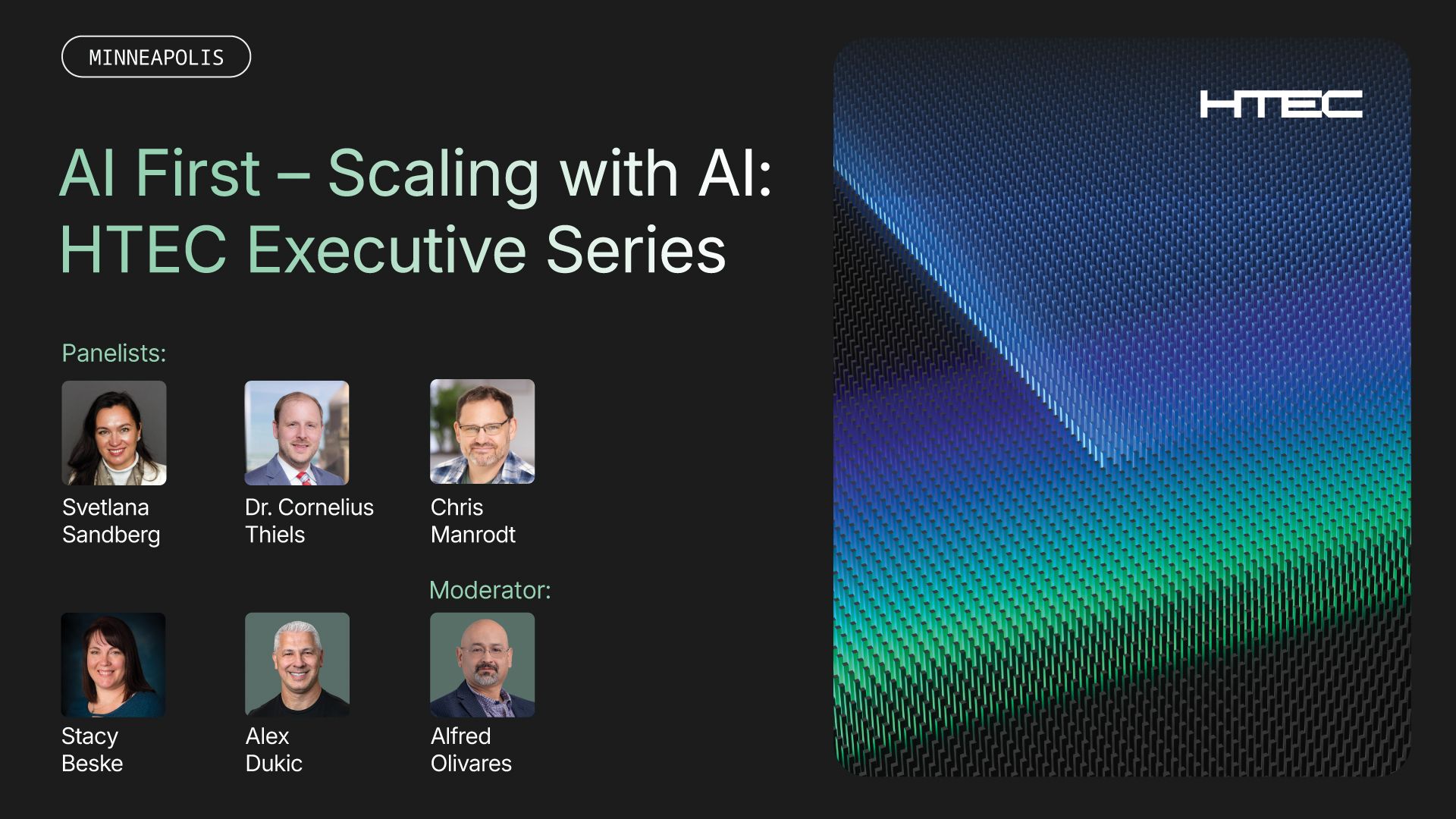Milan has an impressive background and extensive experience in leading numerous projects involving IoT system architecture and implementation. From IBM to Intel Labs, he has been part of many global thriving organizations and is also an acclaimed author of several textbooks and a book “Internet of Things: Concepts and System Design”. The list of achievements goes on.
In this interview, Milan Milenkovic, IoT Evangelist, System Architect and the founder of IoTsense LLC, shares his views on the latest developments in IoT. We asked him what sparked his interest in IoT at the first place.
“I was attracted to IoT for primarily two reasons: One — IoT is essentially a transformational change of the Internet — it provides the interface to the real world allowing organisations to tap into a level of data they’ve never had access to before.
And the more real reason is that it’s extremely interesting and exciting from technical standpoint. It spans the entire spectrum of computing, from the edge sensors, embedded devices and all the way to the cloud, machine learning, analytics, databases and sensor databases and everything in between — all of which are HTEC’s capabilities. While it’s going to take time before the world becomes pervasively equipped with sensors connected to the Internet, IoT will most certainly deliver on a truly enormous promise.”

A blunt and perhaps a bit harsh way to put it is – having no digital transformation and IoT strategy to begin with.
There is an unquestionable value coming from insights made possible by IoT real-time quantification, post-processing, and the analysis of data. Milan believes that in this rapidly changing tech-powered world, companies should focus on creating a sound digital transformation and its constituent IoT strategy that would help them determine how these insights can impact and improve their operations over time and help them get ahead of the curve.


However, he also emphasises that companies often choose to remain conservative.
“Unfortunately, companies tend to get lost in making incremental improvements of their product and processes. I think they should also choose to be bold in exploring how this new technology can help them make beneficial changes in how they do business. HTEC is there help them recognize these opportunities and make IoT a true foundation of their digital journey.”

Organizations should first do a deep-dive analysis to identify what segments of their business would benefit the most from IoT and then test – create a mini IoT system to validate their ideas and get additional insights. This would help them understand both the promise and the difficulties and what it would take to do the integration, how it would impact the processes and how much and where they should invest.
So, according to Milan, companies need to ask themselves two key questions when thinking of implementing IoT strategy:
• In which business segments can IoT help me get the biggest gain?
• Do I want to do it by myself or partner with an industry-trusted expert to help me build a solution that will work for my specific business needs?
“By doing the deep analysis and testing their ideas, companies will be able to understand both the promise and the difficulties of implementing IoT — what it takes to do the integration, how it would impact the processes and how much they should invest into building an IoT solution.”

In one of the Milan’s recent blogs, he pointed out that “IoT interoperability remains elusive in practice with no quick fix on the horizon.”
“The fundamental problem is that IoT is communication between machines which requires machine-to-machine semantic interoperability. Unlike the Internet which has semantic interoperability between the creators of the content, web pages and consumers, machines are not interoperable at the semantic level — the machines are not able to understand all the data they are receiving from another machine.”
Although different standardisation bodies are working on finding the solution, they are using different approaches causing fragmentation between standards. For instance, if you are within a single specification of a standard, the machines will interoperate. This unfortunately is not the case if you want to interoperate between different standards.
“Ideal scenario would be to create sensors that can work with anybody else’s system that doesn’t necessarily use the same standards. And this is inherently a more difficult problem to solve. One of the primary reasons is that IoT imposes a stricter requirement of machine-level semantic interoperability, which is not a part of the general requirements or practice on the Internet and the world-wide web today”, explains Milan.

“From what I am seeing on the market and a number of studies I have read, the biggest benefit in terms of return on investment will initially come from industrial and enterprise applications because they have the clear motive for use and ways to measure the impact. Manufacturing is undergoing major transformation and a big part of it is powered by IoT. This is also in conjunction with Industry 4.0 that uses similar ideas and techniques like machine-to-machine communication and Internet connectivity standards. There are many other areas that will benefit – including smart cities, transportation, energy, utilities, healthcare, and consumer – but they seem to be on a bit slower ramp-up trajectory due both to technical complexity and business-model issues.“

There’s a lot of happening now with Edge Computing and Digital twins, Analytics and machine learning. Digital twins that essentially represent a software replica of the physical thing that is connected to it in real time. This can be used for simulations without disrupting the real system allowing you to identify what works or not and apply it to the real system. But there is a lot of frothing and hype as well. There are things which are still hard to simulate in real time because of the high level of complexity and the hardware and software that it entails.

Source: IoT Interoperability for Big Data: What Exactly
“Overall, there is a lot of hype in terms of what Digital Twins and other technologies can do, and it seems that expectations greatly exceed the current state of art. If you expect the miracle from machine learning just by connecting a few sensors, you are in for disappointment. The point is to temper expectations with realism in terms of what can be accomplished and carefully consider the options and opportunities. The benefit has to outweigh the effort ”, explains Milan.

We asked Milan to explain HTEC’s role in supporting companies exploit the opportunities of hyper-connected world through IoT.
“In my view, HTEC has a wonderful opportunity to become a trusted advisor to its clients on matters of digital transformation and IoT. This includes HTEC being a partner who can help the companies with the initial exploration and implementation of systems powered by IoT without having to commit too much of their technical resources. HTEC offers a broad experience in implementing end-to-end IoT service offerings from ideation to strategy to implementation. From LabTech to Manufacturing, they have broad experience in implementing intelligent systems including smart home devices, connected factories and charging stations. By combining deep industry knowledge with cross-competency delivery capabilities, HTEC has a potential to revolutionize the way companies run their businesses.”

Security is extremely important everywhere. In IoT systems this is even more pronounced since they can act on the real world and, if compromised, can cause physical damage to people and the environment. However, dealing with those issues is different in industrial and consumer spaces.
In industrial spaces Milan explains that “the trick is to identify the threats for a particular IoT system and then mitigate those. It’s not the same as general applications, since IoT systems often have restricted access and are not subject to some common Internet threats like email and phishing. Security techniques and methods applicable to IoT are well known – they include hardening of endpoints, isolation, end-to-end encryption, certificates, and authentication. In operation, they include active monitoring to detect and address intrusions. The industry can address this problem by designing and deploying the appropriate measures.”
”Things are a bit murky in the consumer space where users’ security and privacy are at greater risk. In the U.S., there are endless smart Internet-connected devices, like smart speakers, thermostats, smart doors, private garage door openers and various forms of home automation all of which are IoT systems. Some of them are not well-designed and are operating in unmanaged IT environments which can in turn invade users’ privacy, play tricks with households and cause disruption. And the large installed base of such devices makes them a tempting target for large-scale DDoS (Distributed Denial of Service) attacks that has already been exploited and probably will so in the future”, explains Milan.

IoT is a transformational technology — Internet interface to the world. But like any technology, it can be abused, even on a large scale which can lead to immeasurable consequences.
“When talking about the future of IoT, I must say that I am probably mostly concerned about potential abuses of the technology, such as surveillance, cyber-attacks targeting IoT and general challenges to building trust in IoT devices. On the other hand, I am most optimistic about IoT’s capability as the transformational technology enabling building of smart ecosystems that are door openers for efficiency and new business models. And the wonders of IoT go above and beyond industrial enterprises. From connecting vehicles and building smart city infrastructure, to identifying bird-migration patterns by putting microphones in parks, to reinventing patient experience in personalized healthcare, IoT really transforms the way we perceive and experience the world and ultimately the way we’ll interact with it. And many more uses will evolve as the sensors become more pervasively deployed and connected. Over time, IoT will most certainly deliver on a truly enormous promise.”
Learn how we can help your business become smarter. Talk to us.





